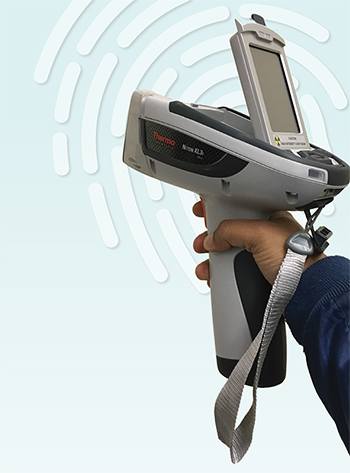Ensuring that asphalt binders don’t contain too many contaminates can be key to ensuring a longer-lasting roadway. The Texas Department of Transportation (TxDOT) is implementing use of an innovative technology in a new test method and updated specifications developed during a two-year study conducted by the Materials and Pavements Division of the Texas A&M Transportation Institute (TTI).

The paving industry routinely uses a variety of materials to produce and modify asphalt and seal-coat binders. A 2016 Asphalt Institute report estimated that nearly 160,000 tons of re-refined engine oil bottoms (REOBs) go into asphalt mixtures in the United States every year. As standard practice, most asphalt binders today still meet the requirements of the performance grade (PG) specification, despite relatively small amounts of these additives.
Transportation agencies, including TxDOT, have recently noticed premature failures of newly constructed pavements. Along with distresses — such as temperature cracking and raveling, aggregate loss, and instances of total surface course loss within five years — pavement engineers have had concerns about embrittlement and a lack of adhesion and tackiness of the asphalt and seal-coat binders. Suspecting that REOB might be contributing to the problem based on laboratory testing, TxDOT contracted Project 0-6881, Recycled Engine Oil Bottoms and Poly-phosphoric Acid in Texas Binders, with TTI to verify the acceptable levels, and to find efficient and accurate ways to test for it.
“We needed to make every effort to ensure that the asphalt binders that TxDOT purchases do not have contaminates in them that may negatively affect the performance of our pavements, and that our specifications are as accurate as possible,” says Ryan Barborak, TxDOT’s flexible pavements section director and a key participant on the project team.
TTI researchers conducted a review of 30 years of literature on the impact of REOB on asphalt binders, asphalt mixtures and seal-coat performance. From extensive laboratory testing and analysis of multiple sources of binders and REOBs, the team then developed and verified scientific methods to detect and quantify the amount of REOB used in both asphalt binders and hot-applied seal-coat binders. The new lab test methods require using either a handheld or a benchtop x-ray fluorescence (XRF) instrument in a simple process.
XRF spectrometry is an analytical method to determine the chemical composition of materials, whatever their form (solid, liquid, etc.). XRF can also sometimes be used to determine the thickness and composition of layers and coatings. The XRF testing detects the presence and the intensities of some key elements that reveal whether REOB exists and estimates the amount in the binder being tested.
“The method is fast, accurate and non-destructive, and usually requires only a minimum of sample preparation,” says Research Engineer Fujie Zhou, TTI’s lead on the project. “The precision and reproducibility of XRF analysis is very high. It’s almost like taking a fingerprint of the asphalt binder. The analysis time after the measurement is only a few seconds.”
The lab tests done over the course of the project confirmed that adding more than 5 percent REOB by weight of total binder can negatively impact the rutting and cracking resistance of asphalt mixes. A similar result was found for seal coats. Researchers also found that binders produced with the same target PG but with different modification techniques can have quite different flow and embrittlement properties.
“Due to the findings of this project, we’ve issued a special provision to TxDOT Specification Item 300 that limits the REOB content to 5 percent in all asphalt binders,” says Barborak. “That means asphalt cement binders for seal coats are also included in this requirement.”
Using the handheld XRF makes it possible to check the binder quality on the job site, a more efficient process than testing in the lab because using the benchtop XRF takes more time. That method can still be valuable, though, as a follow-up to the handheld option, should further analysis be necessary. Use of XRF analysis has potential cost savings for TxDOT and the state.
